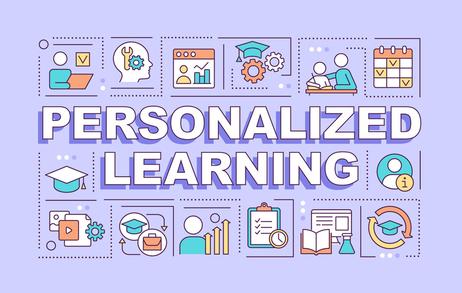Personalized Learning: Revolutionizing Education for the 21st Century
As a teacher, classical musician, and writer, I've always been fascinated by the art of teaching. How we educate our young people shapes not just their futures but also the very fabric of our society. That's why I'm excited to write about Personalized Learning (PL) - an approach causing quite a stir in educational circles.
Now, before you roll your eyes thinking this is just another educational fad, hear me out. Personalized Learning isn't entirely new. In fact, I think it shares a lot of DNA with Maria Montessori's "follow the child" philosophy. But what's different now is how we can implement it, thanks to the tech revolution you and I are living in.
What is Personalized Learning?
So, what exactly is Personalized Learning? In a nutshell, it's about tailoring education to each student's unique needs, skills, and interests. It's moving away from the one-size-fits-all approach that's been the norm for far too long. And let's face it, we need this change. Our current system, constricted by its rigid pacing and mandated standardized testing, is leaving too many kids behind or bored out of their minds.
The key components of Personalized Learning are pretty straightforward:
- Individualized learning plans
- Flexible pacing
- Student choice
- Data-driven instruction
- Technology integration
It's about letting kids learn at their own pace, in ways that engage them, while using data to guide instruction. Sounds great, right?And the benefits? They're substantial. We're talking about improved student engagement (no more glazed-over eyes in the classroom), better academic outcomes, and developing critical thinking skills. Plus, it has the potential to level the playing field for students from diverse socio-economic backgrounds.
This video explains Personalized Learning.
Implementing Personalized Learning
But here's the rub - implementing Personalized Learning isn't a walk in the park. It requires significant changes in how teachers teach, how schools are structured, and how we think about education as a whole. Teachers need extensive training to adapt to this new approach. Schools need a robust technology infrastructure. And let's not forget the elephant in the room - funding. In a country where education funding is tied to local property taxes, implementing Personalized Learning equitably across diverse socioeconomic contexts nationwide is a real challenge.
The Requisite Technology Infrastructure
Speaking of challenges, let's talk about the tech aspect for a moment. As someone who computerized grade reporting systems in the '90s, I can tell you firsthand that getting teachers to embrace new technology can be... let's say, interesting. But here's the thing - today's kids are digital natives. They're spending hours on TikTok and YouTube, getting instant answers to their questions, as well as being bombarded by a virtual firehose of information and disinformation they never asked for. We must harness this familiarity with technology and channel it into effective learning.
That's where adaptive learning platforms and AI-powered tools come in. These aren't just fancy gadgets - they're powerful tools that can make Personalized Learning a reality in classrooms across the country. They can provide real-time feedback, adjust difficulty levels on the fly, and give teachers insights into each student's progress.
Successful Implementation of Tech-powered Personalized Learning
Now, I know what you're thinking - this all sounds great, but how do we actually make it happen? Well, we're seeing some promising examples. Take the in Broward County or the partnership between in Chicago and LEAP Innovations. These initiatives show that with the right support and approach, Personalized Learning can work. But let's be real - implementing this on a large scale, especially in big urban districts like Houston or Atlanta, is going to be a massive undertaking. It's not just about the technology or the teaching methods. It's about changing mindsets, securing funding, and navigating the complex political landscape of public education at the local as well as state levels.
This video from MicroSoft explains AI-powered Personalized Learning.
Comparing American Public Education with Other Countries
And yes, I hear you at the back - what about comparing our system to countries like Finland? It's tempting to look at their success and think we should just copy their model. But we need to remember that we're dealing with a much larger, more diverse population and a completely different funding structure. We can certainly learn from Finland, but we need solutions that work in our unique context.
The Way Forward
So, where do we go from here? Well, I believe Personalized Learning offers a promising path forward for our education system. It has the potential to engage students, improve outcomes, and prepare our kids for a rapidly changing world. But it's not a magic bullet. It's going to take hard work, investment, and a willingness to change.
In the coming articles, we'll dive deeper into each aspect of Personalized Learning. We'll look at successful implementation strategies, explore the latest technologies, and tackle the thorny issues of funding and equity. Because at the end of the day, this isn't just about education - it's about shaping the future of our society.
So, buckle up, folks. The journey to revolutionize education is just beginning, and it promises to be one heck of a ride.
Questions? Contact us on Facebook and Instagram. @privateschoolreview
#PersonalizedLearning #EdTech #K12Education #FutureOfEducation #AdaptiveLearning #StudentSuccess #EducationInnovation #21stCenturySkills #AIinEducation #EquitableEducationSocial Media












